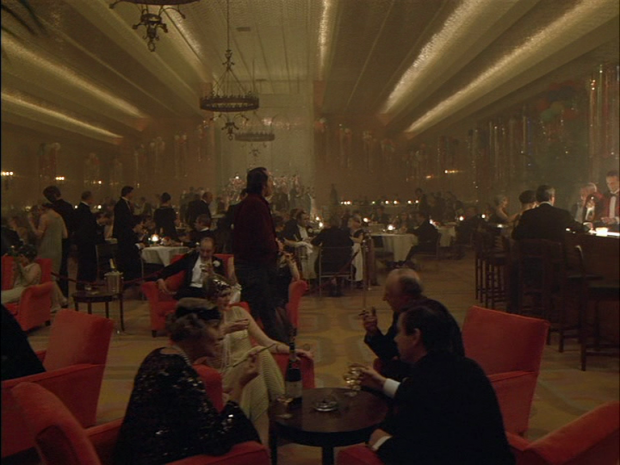An iconographic and text archive related to communication, technology and art.
☛ Galerie de Bellefeuille: “Red Parlour” by Michael Harrington, oil on canvas, 36″ x 48″, 2011.
It’s been suggested before: there’s something inherently cinematic about Michael Harrington’s paintings. Most of his work seem to have a rich potential for narrative: I look at the scene depicted above and I can’t help but to think there’s a complicated story going on (the motion in the feet of the character on the right). Or maybe it’s the themes Harrington keeps coming back at: congregation of men finely suited in fancy halls or hotel rooms, a single subject lost in a cityscape at night, a car driving by to an unknown location.
Peter Simpson, the arts-editor-at-large for The Ottawa Citizen, noticed something similar when he visited Michael Harrington’s studio last spring:
And that’s about as much of the story as you’ll get from the Ottawa painter, who prefers to let you fill in the blanks when looking at his work. “I’m creating these little images, but hopefully it’ll ignite the viewers to come up with their own interpretations of what’s going on.”
Harrington’s oil paintings readily invite interpretation: They practically demand them. His scenes are narrative, and they create a vague but instant impression that you’ve walked in mid-scene and interrupted something in motion, something possibly dangerous, or suspicious, or at least curious. (Ottawa Citizen: “Michael Harrington’s animal instincts: new paintings”, April 6, 2011).
“Red Parlour” in particular strikes me as a familiar setup. It somehow reminds me of the old fashioned ballroom sequences in Stanley Kubrick’s The Shining (image source: Beautiful Stills From Beautiful Films). Both make a remarkable use of the color red and they share a sense of uneasiness. The de-faced men is Harrington’s painting could be said to echo the uncanny waiters in Kubrick’s film (the bartender as well as the waiter who spills advocaat on Jack).

Or maybe it has something to do with another painter known for his cinematic setup: Edward Hopper. See for example New York Movie (1939). Granted, the subject is different: a single woman laying against the wall of a theater instead of two men standing in what looks like the back of a hotel’s parlour. Yet, both painting heavily irradiates a sense of unfinished story: where are the two men going (toward the painter it seems)? what is the self-absorbed usherette thinking about?

The story is not the only thing unfinished in Harrington’s painting: some of the elements represented on the canvas are deliberately left in an approximate stage of completion. It’s especially striking with the face of most of the characters he chose to paint. We know they are faces, yet they are barely recognizable: features are not well defined as if they were recorded from hazy memories or from the insufficient fragments of a long gone dream (not totally unlike some of Andrian Ghenie’s paintings, featured here about a year ago).
Michael Harrington is in his mid-forties. He lives and works in Ottawa, Ontario (Canada). More resources online about his paintings:
- Galerie de Bellefeuille provides hi-res pictures of 11 different paintings produced between 2010 and 2011.
- Katharine Mulherin Contemporary Art Projects offers medium-format pictures of two undated painting.
- Ellen Miller Gallery has four medium-format pictures of paintings produced between 2007 and 2010.
- Galerie St-Laurent+Hill has nine medium-fromat pictures of unidentified, undated paintings (that’s unfortunate). Flash is required.
- MyTurtleNeck is the blog of senior art director Catherine Mangosing. She has a post with medium-format of six different paintings (also unidentified and undated): “cinematic light : artist michael harrington”, October 16, 2010.
- Rover: “In-demand Man. Popular Ottawa artist Michael Harrington paints the meaning of man” by Marianne Ackerman, November 24, 2011. Excerpt:
What he paints is mainly men, cars and flowers, an ever-shifting combination of the three in moonlit fields, fluorescent-lit parking lots, gaudy hotel rooms and lobbies. His colours are vibrant – red, yellow, a lot of black, leavened by a masterful use of light. The worlds he captures are edgy, mysterious; full of pathos, menace, sometimes humour.
- By Philippe Theophanidis
- on
- ― Published in Art, Movies, Painting
- Tagged: dream, Edward Hopper, face, fuzzy, Kubrick, Michael Harrington, representation, storytelling, vague

